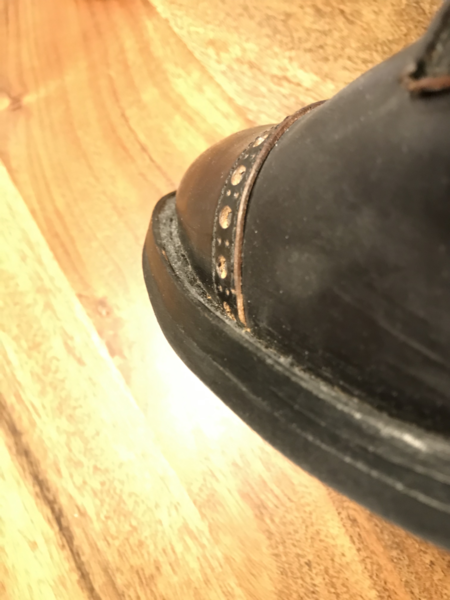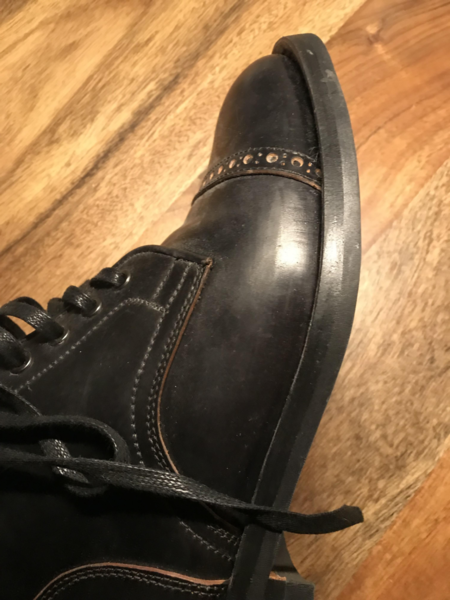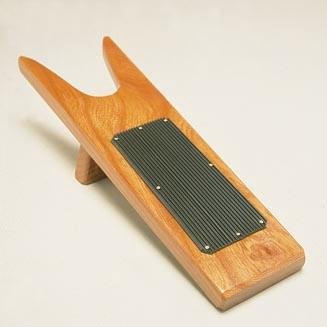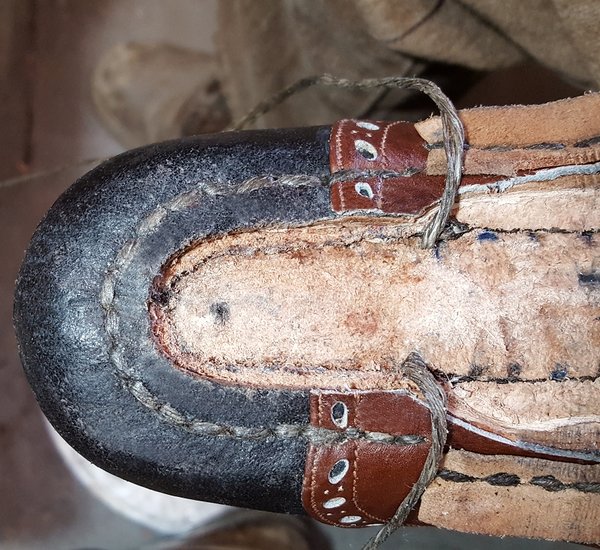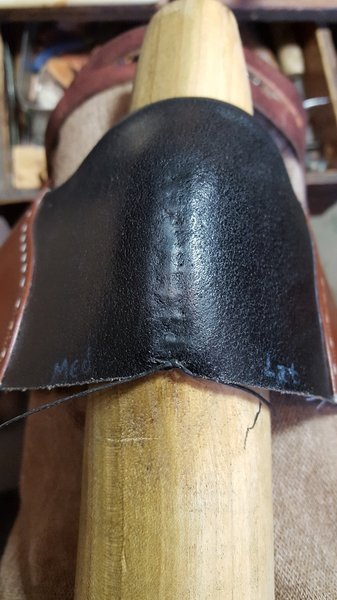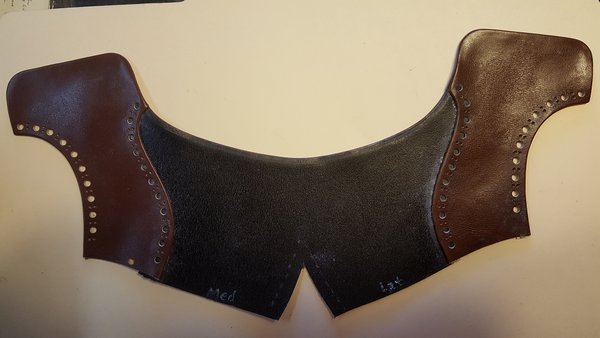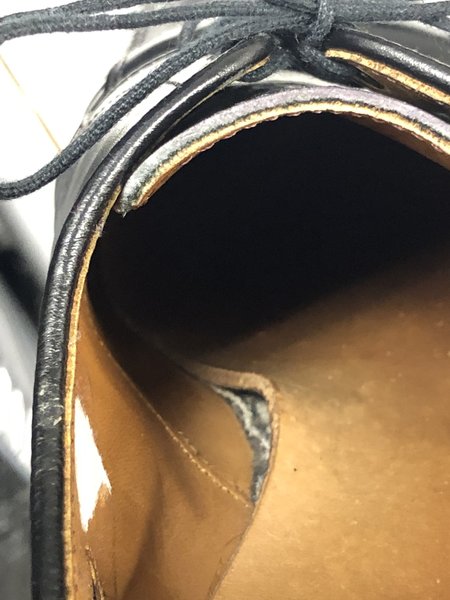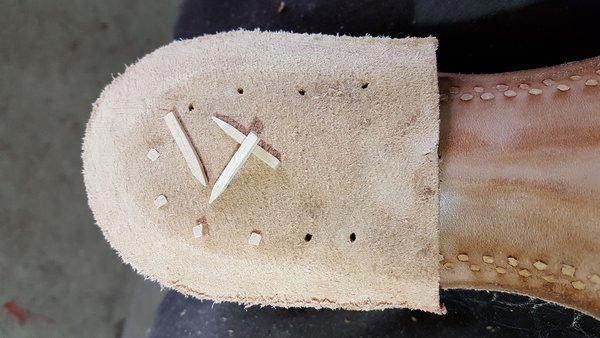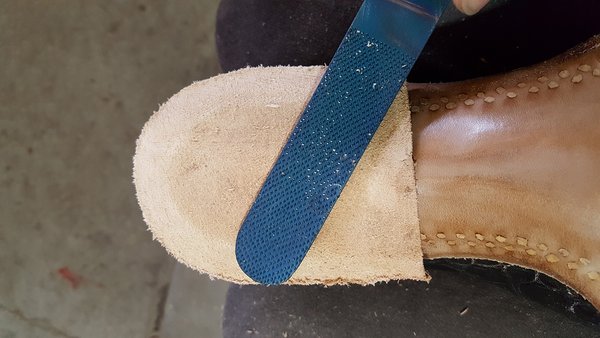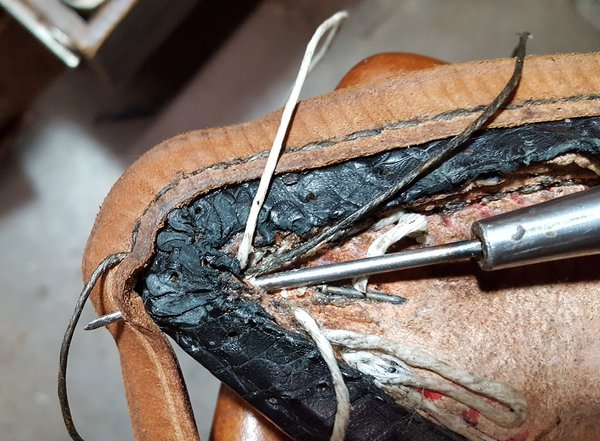- Joined
- Nov 12, 2007
- Messages
- 1,949
- Reaction score
- 1,543
You've missed my point....
Here in part is what Nicholas T. wrote:
"Much more important is that the filler forms a barrier to prevent water soaking through a saturated outsole and into the insole."
I agree with that. It's only logical.
Are you implying that felt by itself will resist or repel moisture without the use of either tar paper or cement or anything else of that nature?
,
Do we? From what evidence or experience? Almost all of your experience...and almost to a man, people here who make that claim...comes from RTW shoes or shoes that are sealed off with lavish amounts of neoprene between the insole and the outsole. The flesh side of the outsole is sealed off, for goodness sake! A point @ntempleman seemed to be making in his last post. So how in the world does moisture get into the shoe when the moisture hits that barrier? How does it get past that layer of rubber?
It can't.
If it can, it can also get past a layer of Topy or even a full rubber outsole, as well.
All of which suggest false assumptions somewhere...wishful or magical thinking. Suggesting someone has accepted as gospel what he wants to believe and not what science and / or direct hands-on experience shows.
There is a scientific principle at work here--something to do with moisture seeking to fill spaces where it is not moist--something you alluded to and the principle behind the idea of breathe-ability and wicking. And it also has something to do with hydrostatic pressure. The point being that there is no direct evidence a supersaturated outsole is the principle culprit for wet feet--if you stand in water for that long the moisture is going to get in around and past the welts and through the upper regardless any kind of rubber barrier.
I readily admit that a supersaturated outsole with no neoprene barrier is theoretically more prone to seepage...although the principle of hydrostatic pressure does involve gravity...but If you expose your shoes to water that deep or that long, you don't care about your shoes and are probably getting what you deserve.
And maybe more to the point, moisture...regardless of how little...can't get out, either. It's easy to say that breathe-ability is insignificant when every shoe you've ever been exposed to (or made) has a sealed off rubber bottom. It's also clueless to dismiss breathe-ability and the potential for moisture to wick to the outside through hydrostatic pressure and then turn around and wring your hands about moisture going the other way--against gravity.
It's leather. It's a luxury item. It requires something other than indifference and brain-dead willful ignorance.
edited for punctuation and clarity
You've missed my point....
Here in part is what Nicholas T. wrote:
"Much more important is that the filler forms a barrier to prevent water soaking through a saturated outsole and into the insole."
I agree with that. It's only logical.
Are you implying that felt by itself will resist or repel moisture without the use of either tar paper or cement or anything else of that nature?




